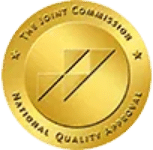One of the things that makes people with drug and alcohol addictions reluctant to seek and accept treatment is the fear of completely ceasing use. Not only will stopping drug or alcohol abuse lead to withdrawal symptoms, many individuals simply can’t wrap their minds around never drinking or using a drug again. The finality of it all can be intimidating and overwhelming, which in turn can make a person procrastinate seeking treatment. While it might seem drastic, abstinence addiction treatment is generally the most effective approach.
To find out more about our available treatments, call 772-774-3872 today.

Abstinence Treatment Defined
When it comes to addiction rehab, abstinence is defined as the complete cessation of substance abuse. The Substance Abuse and Mental Health Services Administration (SAMHSA) describes it as the “safest approach for those with substance use disorders.”[1] Abstinence is the most common form of addiction treatment in the nation.[2]
The safest way to prevent a relapse is to avoid substance use entirely.
This approach, which is based on the disease model of addiction, assumes that people with substance use disorders are always at risk of a relapse, and that the safest way to prevent a relapse is to avoid substance use entirely. This strategy also removes unnecessary temptations from a patient’s life.
The History of Abstinence in America
Though the abstinence approach is centuries old, the modern version of the abstinence recovery model used by most addiction recovery facilities is based on the Minnesota Model. Created in the 1950s, the Minnesota Model relies on 10 fundamental tenets. While this model was initially created for the treatment of alcoholism, this approach is now used for all types of addictions:[3]
- Alcoholism is an involuntary, primary disease that is describable and diagnosable.
- Alcoholism is a chronic and progressive disease.
- Alcoholism is not curable, but the disease may be arrested.
- The nature of the alcoholic’s initial motivation for treatment, its presence or absence, is not a predictor of treatment outcome.
- The treatment of alcoholism includes physical, psychological, social and spiritual dimensions.
- The successful treatment of alcoholism requires an environment in which the alcoholic is treated with dignity and respect.
- Alcoholics and people with other addictions are vulnerable to the abuse of a wide spectrum of mood altering drugs. This whole cluster of mood altering drugs can be addressed through treatment that defines the problem as one of chemical dependency.
- Chemical dependency is best treated by a multi-disciplinary team whose members develop close, less formal relationships with their clients and whose activities are integrated within an individualized treatment plan developed for each client.
- The focal point for implementing the treatment plan is an assigned primary counselor, usually a person who is in recovery, of the same sex and age group as the client, who promotes an atmosphere that enhances emotional self-disclosure, mutual identification and mutual support.
- The most effective treatment for alcoholism includes an orientation to Alcoholics Anonymous (AA), an expectation of step work, groups that combine confrontation and support, lectures, one-to-one counseling and creation of a dynamic learning environment.
The Minnesota Model combines addiction recovery therapists with psychological testing, therapies, family involvement and aftercare to help patients achieve long-term abstinence. It also focuses on the first five steps of AA’s 12-step model:[4]
- We admitted we were powerless over alcohol–that our lives had become unmanageable
- We came to believe that a Power greater than ourselves could restore us to sanity
- We made a decision to turn our will and our lives over to the care of God as we understood Him
- We made a searching and fearless moral inventory of ourselves
- We admitted to God, to ourselves and to another human being the exact nature of our wrongs
- Criticisms of Abstinence
Most criticisms of abstinence center around its difficulty. Approximately two-thirds of people who go through traditional addiction rehab will relapse in less than one year. This fact serves as evidence for many that total abstinence may be too difficult to achieve for most people with addictions. This could potentially vilify people who relapse as well, especially following extensive and often expensive treatment.
Additionally, people may avoid treatment completely because they do not want to stop using. Only an estimated 10 percent of people who need substance abuse treatment actually get it. Of those who opted not to get treatment between 2010-2013, 24.5 percent cited not being ready to stop using as the main reason for not getting help.[6] This was the second most common reason given, behind being unable to afford treatment.
Another criticism is the strict adherence to the 12-step model followed by most abstinence-only treatment facilities. This focuses on the existence of God or some form of a higher power, which isn’t a concept that is easily accepted by everyone.
What is Harm Reduction?
There are two primary methods of combating substance abuse: abstinence-only treatment and harm reduction. The latter refers to a person slowly reducing the amount of alcohol or drugs she consumes, as opposed to completely stopping. Many people with addictions have unknowingly implemented harm reduction techniques when attempting to self-control their substance abuse, however, this approach did not have an official name until the mid-90s, when it controversially became popularized.
Moderation Management was founded in 1994 by Audrey Kishline. The organization was created as an alternative to abstinence-only programs, which were criticized for being unrealistic and imposing religion on people. It is considered the nation’s first harm reduction mutual aid support group. Kishline and droves of followers rejected the idea that they were alcoholics who needed to completely stop drinking and instead focused on moderation of “problem drinking.” The idea was to help people who perhaps did not meet the criteria for alcoholism but still had a substance abuse issue.
The movement gained incredible momentum throughout the 90s, but was short-lived due to controversy involving Kishline. In January of 2000, Kishline admitted that she had been secretly drinking and that moderation was not working for her. Two months after switching her recovery goal to abstinence and joining AA, Kishline tragically hit and killed a father and daughter in a drunk driving accident. She served 3.5 years in prison and sadly committed suicide in 2014.[7]
Criticisms of Harm Reduction
Kishline’s admission and subsequent car accident severely damaged the harm reduction movement in the U.S. Her case was seen as proof that people cannot “manage” alcoholism while continuing to drink. One of the primary criticisms of harm reduction practices is that it enables people with addictions to keep using. The approach forces alcoholics to police their own drinking, yet many of these same people have failed to control their use in the past. Why would anything change without professional treatment?
Harm reduction lacks accountability as well. Everything is based on self-reporting (and it’s easy to lie to others and yourself about substance abuse, as the Kishline case illustrated), so there’s no way to verify or deny whether or not someone is drinking and how much she is drinking. Also, many harm reduction peer groups lack the stability, continuity and abundance of 12-step groups. Any city in America offers dozens of 12-step-based meetings, and there are millions of members worldwide.[8] Moderation Management groups are not as plentiful and are often not nearly as well organized.
Additionally, it makes little sense to apply harm reduction approaches to drug abuse. While there are acceptable levels of alcohol consumption, there is no acceptable level of drug use. You cannot tell a person abusing heroin that it’s okay to shoot up once in a while, or a person addicted to cocaine that doing a couple of lines here and there is fine. Even single instances of drug abuse can lead to overdose and death, which makes harm reduction an ill-advised strategy when dealing with illicit drugs.
Lastly, how does one measure success or failure in harm reduction? Does going from six beers per day to five qualify as successful? The arbitrary nature by which harm reduction strategies define success makes it easy for individuals to claim they’ve made progress, especially when compared to abstinence treatment, which requires complete cessation of substance abuse.
Comparative Studies of Efficacy
Due to the fact that long-term success rates in stopping or reducing substance abuse are mostly based on self-reporting, there is no truly accurate measure of the efficacies of either recovery strategy. For example, while AA has undoubtedly saved lives and has been successful in helping many alcoholics gain control over their addictions, reported success rates vary from source to source.[9],[10]
Additionally, while the failure of Kishline and others to moderate their substance abuse may serve as evidence of the ineffectiveness of harm reduction, supporters of this approach can point to other individuals who were able to gain control of their addictions without focusing on abstinence as proof of its viability.
One thing to remember about abstinence and any 12-step program is that active participation increases the chance of long-term success. Approximately 40 percent of AA members drop out within the first year.[11] This makes it difficult to track success or failure. Should the members who drop out of treatment be counted as failures? Should the ones who stay be counted as successes? Add in the fact that not all abstinence or 12-step programs are identical and finding an accurate success rate becomes even more difficult.
Alcoholism Treatment Studies:
A 1997 study called Project Match randomly assigned over 900 problem drinkers to receive one of three different types of treatment: 12-step therapy, cognitive-behavioral therapy and motivational enhancement therapy. The study found that the 12-step approach boosted the amount of alcohol-free days from 20 percent prior to treatment to 80 percent afterward. Within a year, nearly 20 percent of those treated in 12-steps had remained completely sober for 12 consecutive months.
A 16-year study of problem drinkers suggested that receiving 12-step treatment at an AA meeting was far more effective than no treatment at all. Of those who attended at least 27 weeks of AA meetings during the first year of alcoholism treatment, 67 percent were abstinent at the 16-year follow-up. Of those who did not participate, only 34 percent were abstinent.[12],[13]
There are no definitive studies into the efficacies of abstinence or harm reduction addiction recovery programs. Results are often biased based on which approach is endorsed by an organization or researchers. Additionally, many studies fail to isolate all factors to conclusively show what was effective and why. This results in an overabundance of unproven hypotheses.

Many Alcoholics Have Already Tried and Failed at Harm Reduction
Methadone clinics, needle exchange programs, safe rides for people who have been drinking, safe injection sites and adolescent addiction education programs are just a few common forms of harm reduction available around the world. There are multiple programs that accept that societal substance abuse is inevitable and seek to provide resources to limit the damage it causes.
In terms of harm reduction that refers to limiting drug or alcohol use, most people struggling with addictions have attempted this and failed. Very few people with an addiction immediately seek help. Oftentimes, the first step is to try to self-rehab and reduce drug use or alcohol consumption without any assistance. Because of the chronic nature of addiction, these attempts are frequently unsuccessful. When it comes to determining what’s right for you or a loved one, honesty is the best policy. You should ask yourself the following questions:
- Have you tried to cut down before?
- How successful were you?
- What difficulties did you encounter?
- What, if anything, led to an eventual relapse?
- What kind of damage has substance abuse caused in your life?
- Are you struggling with alcoholism or drug addiction?
- Do you have any preexisting mental illnesses?
- Can you accurately keep track of how much you’re drinking?
- Are you in danger of experiencing serious withdrawal symptoms?
In many cases, a person trying to moderate her drinking creates a slippery slope. As she drinks more, her ability to make sound decisions diminishes. If she has a history of having trouble managing how much she drinks, it would be difficult to change that trend without professional help. It would also be difficult to justify a harm reduction approach when the individual in question has not previously shown she could self-moderate effectively.
If you’re unsure of the type of treatment you need, we invite you to speak to one of our industry experts at Behavioral Health Centers. Our team of addiction care experts has decades of experience and can guide you and your family to the best treatment. Contact us today to learn more.





